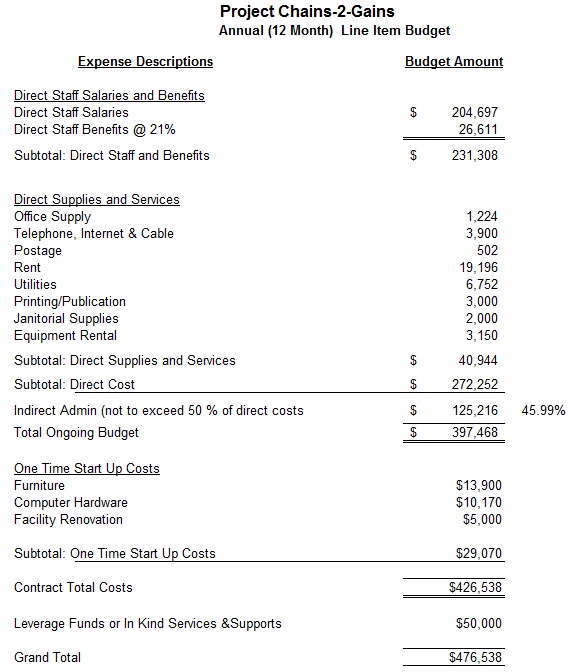DESCRIPTION OF PROJECT:
"Our transitional-to-permanent employment program starts its clients out initially with a 90-day trial period as they work toward obtaining a permanent position with the same company. The idea is for the employer to initially offer continued employment for at least 90 days, thereby allowing the client to learn routines of the workplace while also gaining much needed job skills. If the employer decides not to hire a client long-term, he/she still walks away with some work experience and has the opportunity to apply with one of our other participating employers.
The strength of this evidence-based model in employing ex-offenders is due to its three-pronged approach that combines real work experiences with skill development and a continuum of support services. Such a holistic approach has been shown to be effective in helping clients overcome significant barriers to employment. To increase the likelihood of long-term employment, case managers regularly collaborate with each client, partnering businesses, and human services organizations to help ensure both the provision of necessary support services and continued employment.
Orientation and Intake:
When clients first enter the doors of our facilities, they are directed to a case manager who will conduct their individual orientation and intake. It is at this time that we emphasize to the client that he/she must put forth their time and effort to get their lives back on track; they are ultimately responsible for the final outcome. However, we stress that Project Chains-2-Gains and its clients work together as partners. Importantly, our services are to be considered a help up, not a hand out. Clients will complete assessments that not only help identify potential barriers to employment (financial, emotional, education, training, etc.), but also talents and interests, which could help direct the job search process.
Job Readiness Training:
Job readiness training is an important component of Project Chains-2-Gains' Transitional Employment Program. Before placement, all clients will attend a 2-week 30-hour job readiness class where they acquire the skills necessary to be competitive in today's job market. Our soft skills training sessions consist of resume writing, interview skills, communication skills, work ethics, team building, dressing for success, etc. Clients also have opportunities to network with each other, their instructors and trained volunteers as they search for and gain meaningful employment.
Job Placement Services:
While clients are working on their job readiness training, Project Chains-2-Gains staff is busy surveying the job market for employment opportunities or working with employers who are already a part of our expanding network to find suitable positions for our clients. Most eligible clients who complete a required job readiness program are initially placed in a trial (transitional) job for 90 days. Upon successful completion of the probationary period, many employers hire clients permanently. Once long-term employment is secured, a case manager will continue to follow-up through visits to the job site or brief conference calls with clients and employers, but the intervals between follow-ups will lengthen.
Unlike many other similarly designed programs, Project Chains-2-Gains' aims to utilize an individualized facilitative approach in all the services we provide to both employers and clients alike."
In order to run a successful 1-year re-entry pilot program serving 35 clients, the program director needs to apply for funding for a grant. In order to do so, he/she must prepare a project and operating budget. In order to get started, the program director must work as the case manager and perform all business operations until other staff can be hired. However, the program manager has decided to add a part-time case manager to assist with caseload. Hence, the program manager has decided to ask a potential funder for $45,000 to cover direct costs. Which amounts would you pull from the spreadsheet to cover only the project costs? Explain why and show breakdown on a spreadsheet. Explain how these costs have been calculated and justify why each are needed to run the project.
